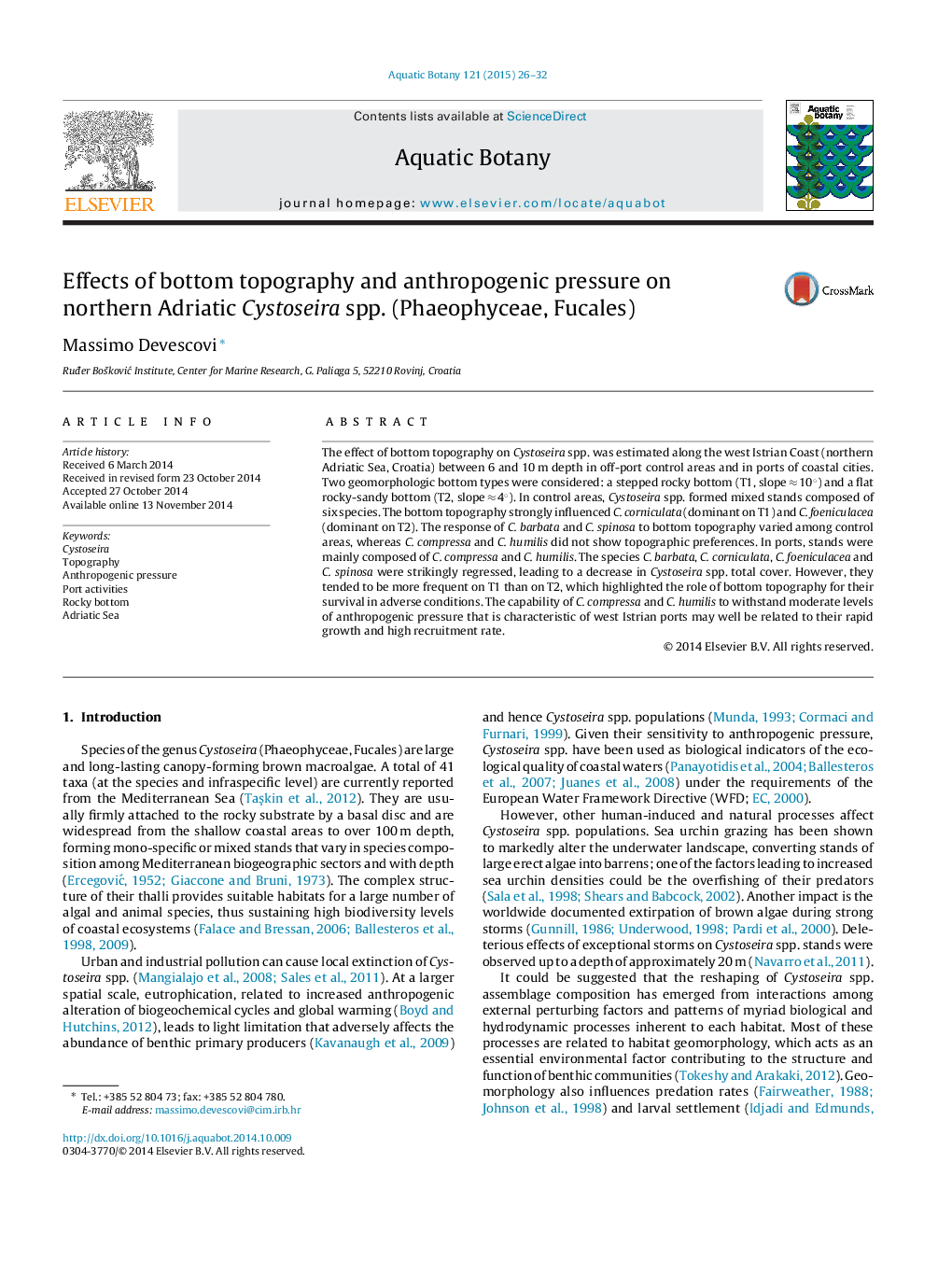| Article ID | Journal | Published Year | Pages | File Type |
|---|---|---|---|---|
| 4527683 | Aquatic Botany | 2015 | 7 Pages |
Abstract
The effect of bottom topography on Cystoseira spp. was estimated along the west Istrian Coast (northern Adriatic Sea, Croatia) between 6 and 10 m depth in off-port control areas and in ports of coastal cities. Two geomorphologic bottom types were considered: a stepped rocky bottom (T1, slope â 10°) and a flat rocky-sandy bottom (T2, slope â 4°). In control areas, Cystoseira spp. formed mixed stands composed of six species. The bottom topography strongly influenced C. corniculata (dominant on T1) and C. foeniculacea (dominant on T2). The response of C. barbata and C. spinosa to bottom topography varied among control areas, whereas C. compressa and C. humilis did not show topographic preferences. In ports, stands were mainly composed of C. compressa and C. humilis. The species C. barbata, C. corniculata, C. foeniculacea and C. spinosa were strikingly regressed, leading to a decrease in Cystoseira spp. total cover. However, they tended to be more frequent on T1 than on T2, which highlighted the role of bottom topography for their survival in adverse conditions. The capability of C. compressa and C. humilis to withstand moderate levels of anthropogenic pressure that is characteristic of west Istrian ports may well be related to their rapid growth and high recruitment rate.
Related Topics
Life Sciences
Agricultural and Biological Sciences
Aquatic Science
Authors
Massimo Devescovi,
